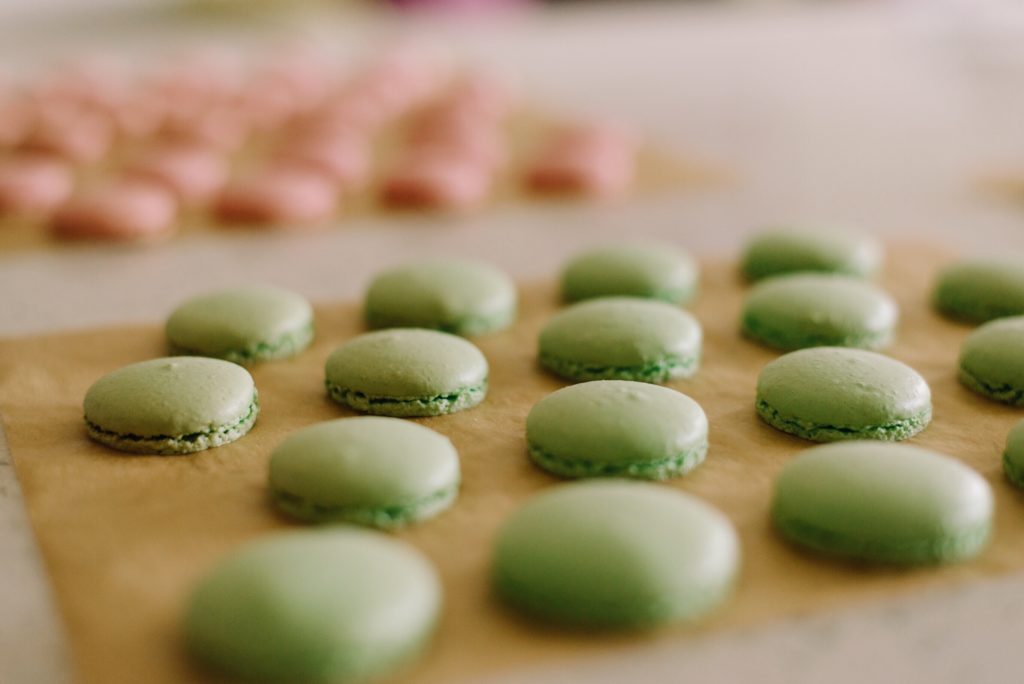Common problems when making French Macarons

Everyone knows French Macarons are challenging to make, yet once mastered, it's easy to look back and understand why they failed in the first instance. We have some troubleshooting tips to ensure you get them right in the first or second round.
Using the Italian Meringue method is probably the most reliable, a technique of heating sugar and water to make a syrup, then gently whisk into the beaten egg whites. The meringue is more stable.
My macarons have nipples once piped?
The mixture hasn't spread when piped on the tray. Tap the baking tray onto the work surface twice; this ensures even spreading and removes any pesky air bubbles. This also occurs if the meringue batter is under-mixed, use a spatula to mix the mixture, gently fold in the dry ingredients into the meringue. The consistency is right when it looks glossy around the edges. The way to test is by prodding it with the end of the spatula, if the batter sinks back into place after 20 seconds, you have achieved the right consistency.
My macarons have cracked?
This means the piped shells weren't dried out for long enough before being baked. Drying out process allows the macarons to form a skin on top, which prevents the expanding air from escaping. If the skin isn't thick enough, the expanding air will burst right through it, causing the macarons to crack. Best way to do dry out the macarons is to leave them overnight, approximately 8-9 hours before baking. If you want to speed things up, you can also use a dehydrator, 20 minutes on a lower setting.
My macarons don't have any feet?
If the mixture has been over-mixed, feet will not be seen. The mixture will look ready when it starts to turn glossy around the edges and falls back into place when prodded after 20 seconds. Another cause for no feet may also be under-beating the egg whites for the Italian meringue. Egg whites should have reached a soft peak stage when the hot syrup is poured over them. The best time is to start beating the egg whites on full speed once the sugar syrup reaches 117°C and by the time it reaches 121°C, the egg whites should be sufficiently beaten.
If the macarons have small but flat feet, this is because they have not been baked long enough. When you think the maracons are baked, touch the edge of the feet, if they feel delicate and sticky, they need to be cooked for longer.

My macarons have a blotchy surface, or they seem blotchy?
It all depends on the sort of ground almonds you are using. Shop bought contain fragments which need to be either seived or pulsed more finely in a food processor. Whizz up the ground almonds and icing sugar together for a few seconds 10-15 to be exact. Any more than this and the oils from the almonds will start to release, causing the shells to look blotchy. Once pulsed, sieved and discard any large fragments that do not pass through.
My macarons aren't round?
This is caused by irregular piping, try holding the piping bag perpendicular to the baking tray and draw out evenly spaced circles on the underside of the parchment paper to guide you. You can also use a macaron mat which will make your life that much simpler! If you are adding liquid colouring or powdered colouring which may need to be dissolved in water, sometimes the mixture can spread unevenly if there is too much water in the mix. Only use 1 tbsp of liquid per 200g of almond/icing sugar mixture.
We hope these tips help you when it comes to perfecting the art of macarons.

